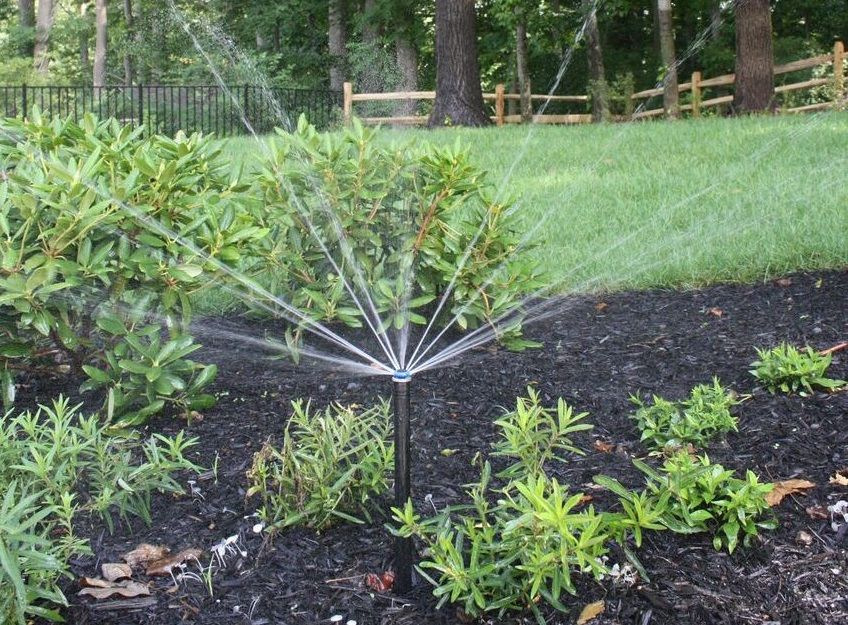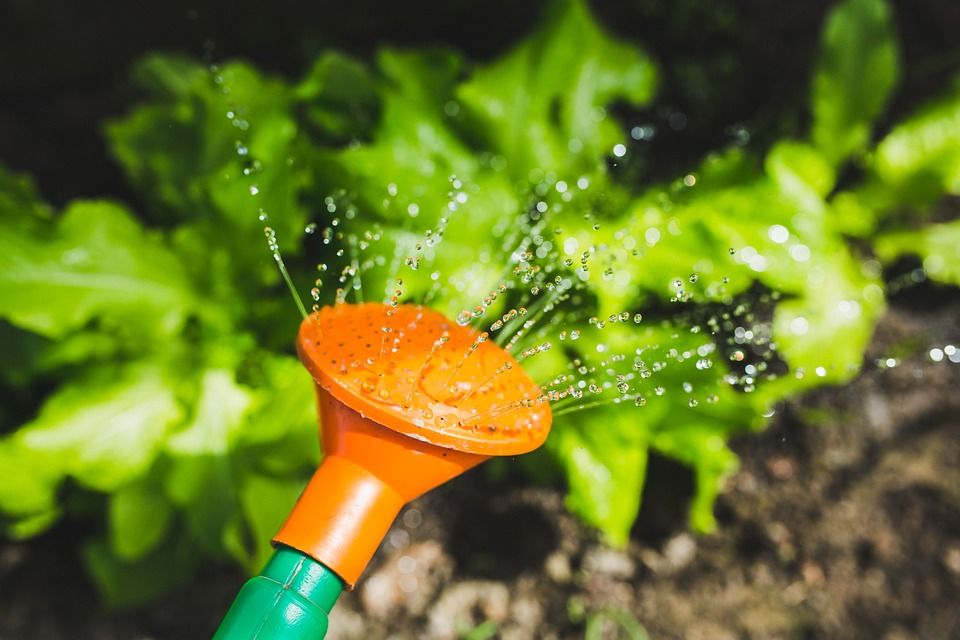How to Properly Water New Plants
Every living thing in your landscape needs water to thrive. Therefore, proper watering is vital, whether you are hand-watering planters or using a sprinkler system to achieve a lush green lawn. We will help you understand how to properly water new plants. If you lack the time necessary for such care, we can also help you by installing a customized sprinkler system.
Tips for Watering New Plants Properly
New plants may have different requirements than those that are established already. The Burkholder team has some tips for adequately watering new plants.
Check All Plants Weekly
Check newly planted trees and shrubs every few days for the first two weeks. Annuals and perennials should be checked more often. After those two weeks, check every 7 to 10 days. Dig around the root zone with your fingers to a depth of 2-3″ for small plants and 6-8″ for larger ones and trees; water generously if the soil feels dry.
Provide Slow, Deep Watering
Another tip to help you properly water new plants is deeper watering. Getting water deeper into the soil is better for your plants’ roots than a shallow, ground surface watering. Place the hose at the base of the plant at a heavy trickle. If you are unsure how long to water new plants, aim for 30-60 seconds for small plants – longer for larger plants while moving the hose to a few locations around the plant.

Avoid watering when the soil feels moist. The earth must be allowed to dry out between watering. If a plant is maintained in constantly moist soil, the plant’s health will deteriorate over time. A plant weakened by overwatering may die of oxygen deprivation or become susceptible to pests and disease. Lawn irrigation systems can help you provide a slow, deep watering close to your plants’ roots.
Adjust Watering as Plants Mature
As your landscape grows more mature, your watering practices may need to be adjusted.
- You should water daily for the first 2 weeks after planting unless you get rainy weather, but after a month or so, decrease the frequency that you water plants to around 2-3 times a week.
- In the following months, water less often. As mentioned above, whenever you water your plants, focus on providing water deeper into the ground. Just as for newly planted specimens, established plants and trees need to develop deep roots over time. These deep systems can help the trees survive periods of drought in the summer.
Even though you are less frequently watering, a deep watering provides enough water for the roots without causing issues from overwatering, such as stunted growth or yellowing leaves.

Water Early in the Morning
Generally, the ideal time to properly water new plants as well as more mature plants, is early morning. Morning watering maximizes your plants’ chance to absorb all of the water you provide. During the other times of the day, the weather is noticeably hotter. Watering during these times can result in water evaporating. Watering in the morning is especially important when the temperatures are scorching during the summer. The chances of water evaporating then are higher than in other seasons.
You can set a sprinkler irrigation system to activate during any time of the day. So if you want to have consistent watering in the morning, schedule your irrigation system timers accordingly.
Monitor Water Requirements Frequently
Monitoring water requirements frequently is more important than actually watering frequently. Monitor your plants’ water requirements for at least the first two to three years. Plantings close to buildings where heat may reflect, and plants under roof eaves require closer monitoring. During the hot summer months and early fall, disregard natural rainfall. Often, rain received during these periods produces mostly runoff and contributes little to increasing ground moisture.
The Value of Mulch in Helping Your Landscape Thrive
Using mulch, in general, is a good idea because the mulch aids in retaining water. In addition to that factor, mulching around trees and shrubs enables them to more efficiently take in water. Grass around trees and shrubs competes with them for water. Since a healthy grassy area has a dense root system, the trees and shrubs are prevented from developing roots for water intake in the top layers of soil. Having mulch in place of grass allows the trees and shrubs to take in water more easily, so they grow more quickly and with more vigor.
Maintain a 2-2 ½ mulch layer to help conserve ground moisture, prevent weeds, and retain moisture. Remember, excess amounts of mulch will result in poor air circulation and reduce plant vigor. The Burkholder team installs 3” at the time of planting. Install only 1-2” each year thereafter.
Why Use a Sprinkler System for Proper Watering of Plants?
Stress-free, hands-off irrigation of your lawn is possible with an automatic sprinkler system. Today’s sprinkler irrigation systems have zones so that you can program the proper water levels for each aspect of your landscape. So your plant beds can have long, deep watering cycles at the desired frequency, and your grass can get the right amount of water.
Grass watering requirements can vary according to rainfall, whereas much of rainfall is unable to be used by trees and shrubs due to runoff, as previously mentioned. Your irrigation system can be programmed to allow for rainfall’s impact on water levels. You can also be sure that your plants and trees remain healthy when you go on vacation if you have a sprinkler system.
Call Burkholder for Fine Main Line Landscaping and Sprinkler System Services
The team at Burkholder wants you to enjoy one of the best landscapes in your neighborhood, which requires someone to properly water new plants, established plants, and your grass. For more information and helpful ideas, contact us today for a landscaping design consultation.

